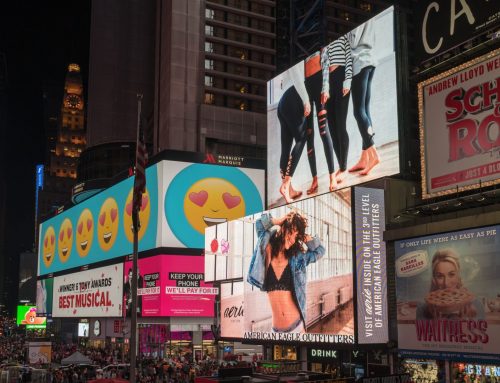10 Things Your Competitors Can Teach You About Advertising
When you think about the work you want to do, which brands come into your mind? Nike? Coca-Cola? Redbull? If you thought about any of these three, you are far from being alone. The truth is that achieving such a high status in the advertising world does not come easy. Fortunately, you can learn a lot from your competitors, whether individuals, agencies, or other brands. Here are 10 things you can learn from your competitors:
1. Reputation Is Important
In the advertising world, it’s all about building trust. The building between creative teams, between consumers and their brands, is crucial. While trust is hard to build, it can be lost quickly and fairly easy.
Sketchers, the shoe brand which claimed its sneakers helped people get in shape, had to pay $40 million when it lost a class action lawsuit for false promises and unfounded claims.
The lesson here is, be true to yourself and don’t throw trust out the window.
2. Keep Your Radar On
Information does not follow a 9 to 5 schedule and neither should your mind. This does not mean working 24 hours a day with absolutely no work/life balance, it just means that everything you see, hear and read can be relevant to your job.
Many brands embrace social movements, like Target to include gender-neutral restrooms or The Fearless Girl statue placed by the Charging Bull by McCann New York and their client State Street Global Advisors on International Women’s Day. If placed outside of its timing relevance, these examples might not have made sense – or do you think placing The Fearless Girl during Christmas would be a smart move?
3. Inspiration Comes From Unexpected Places
Some creative offices try to change the settings by adding a ping pong or a pool table, maybe a couple of video games. While these can be some fun aspects of the office, you are still inside an office. Instead of falling into this trap, just step back, go outside, watch a movie or go for a bike ride.
In the TV show Mad Men, which took place in the 1960s, Don Draper pitched a ketchup idea to Heinz, which was rejected in the program storyline. In March 2017, Heinz adopted the idea, for real.
Next time you feel guilty by your Netflix and chill moments, just think of it as extra research for your job.
4. Timing Is Everything
Have you ever thought why memes are so popular? Many of them employ a great sense of humor, but most importantly, they are relevant to the time of their creation. All it takes for a meme to develop is a news article, photo or video and a catch phrase or insight to make the internet go wild.
On March 18, 2017, The New York Times posted a profile on Donald Trump Jr. While the article itself had controversial material about the president’s oldest son, the photo used in the article, showing Donald Trump Jr. sitting in the woods became the focus of many memes and jokes. One month later and the reaction would not have been so great.
Buzzfeed, the billion-worth website, exists solely due to its timely relevant articles. Keep that in mind when you decide to postpone an idea or decide to procrastinate a bit. If you don’t execute, there is not enough inspiration in the world to help you out.
5. Be Memorable
Some of the best ads are those which are remembered for years, both by advertising professionals and the general public. Aspire to become memorable just like your favorite pieces from competitors. All your creativity and research capabilities will not be of good use if people do not remember you.
Aim high, shoot towards the stars, be the next Coca-Cola polar bear. Your ambition can take you places in the advertising world.
6. Know Your Platforms
Traditional, digital and social media. TV, magazine, radio, billboards, digital signage, web, Facebook, Instagram, YouTube, Twitter. There are too many options out there and you need to understand the application for your ad to be successful.
Billboards with too much text, infinite scrolling web pages with important information on the footer, tweets that don’t live in the now, right-side placement of Facebook ads… If you are doing these things, the only thing you are accomplishing is wasting your client’s money.
Instead, dig deep. Hit show Stranger Things, by Netflix, took videos to a new level through pop culture and 360 technology. In Brazil, the series brought back childhood fears through famous TV host, Xuxa, talking about her doll which was “known” for coming to life at night and scratching children’s faces, or by playing her records backward and “clearly” showing her connection with the devil. An instant audience hit in the country. On the technology side, 360 video technology took viewers deep into the series by exploring the house, in a dark environment, with a creature from the upside-down world creeping behind the viewer’s back. Another hit.
7. It’s All In The Bullseye
If you don’t hit the right target, or audience, there is no point to your campaign.
Dove’s Real Beauty campaign is over 10 years old and remains a powerful one. After research in several countries, the numbers indicated that only 2% of women who were interviewed found themselves beautiful. Instead of using the magazine-style-runway-unrealistic beauty in their ads, Dove went for the other 98%, showing that they too were beautiful.
Either you understand who your target is, or your competitors will. There’s no way around this.
8. Sometimes It’s Just Tactics, Sometimes It’s Pure Strategy
Strategic thinking means understanding the entirety of a campaign, its effects over time on the brand and on the audience, and how it can be adapted throughout every single stage of its existence. Tactics, on the other hand, are a more “in the now” approach, punctual, that do not need a prolonged existence in order to work.
If you receive a flyer on the street and never hear about the brand or product again, that is an example of a tactical approach. If you receive a flyer, get a message on your phone, see different pieces of a campaign on different platforms throughout time, that is a strategy.
KFC brought back Colonel Sanders as part of a long-lived campaign employing different actors and different themes, keeping the brand alive with the iconic character. The strategy is on the roll.
9. Data Encounters Hunch, Or Not
Data can lead to more accurate insights, and insights will lead to better ads.
However, if you have been doing your homework right by being hyper-aware, your very own repertoire will help you during your ideation process. You can actually reverse the process and start with an idea, and assess its relevance with data.
Take a look at Geico’s Can’t Skip This Ad YouTube pre-roll. This is a great example of data used to deliver a message. It breaks the mold and goes for the unexpected: after the short 5-seconds message, which is the time most users will view an ad before skipping it, the company proceeds to add a touch of humor by freezing the family having dinner, while a big dog jumps on top of the table and eats everything, extending the ad to 30 seconds. The humorous take on a complex and annoying ad format earned the creative team behind it Ad Age’s 2016 Campaign of the Year.
10. Did You Get The Memo?
Clients don’t always provide all the necessary information, but having a great research and planning team can make quite a difference.
Statistics on social media are generally easy to get. It can be very tempting to turn to fast and free online tools to gather information, but in the competitive ad business, being able to conduct research can make the difference between mediocre and awesome work. Looking back at Dove’s Real Beauty campaign, the percentage of women who found themselves beautiful only became available because the research was conducted specifically for the brand. Studying how your competition used data for their campaigns can provide you with great insights as well.
Conclusion
When it comes to advertising, your competitors can also become indirect mentors. Learn from their mistakes and achievements, look at their campaigns and assess why they were successful, why they failed and what could have been done differently
Written By: Jaci Coningham






